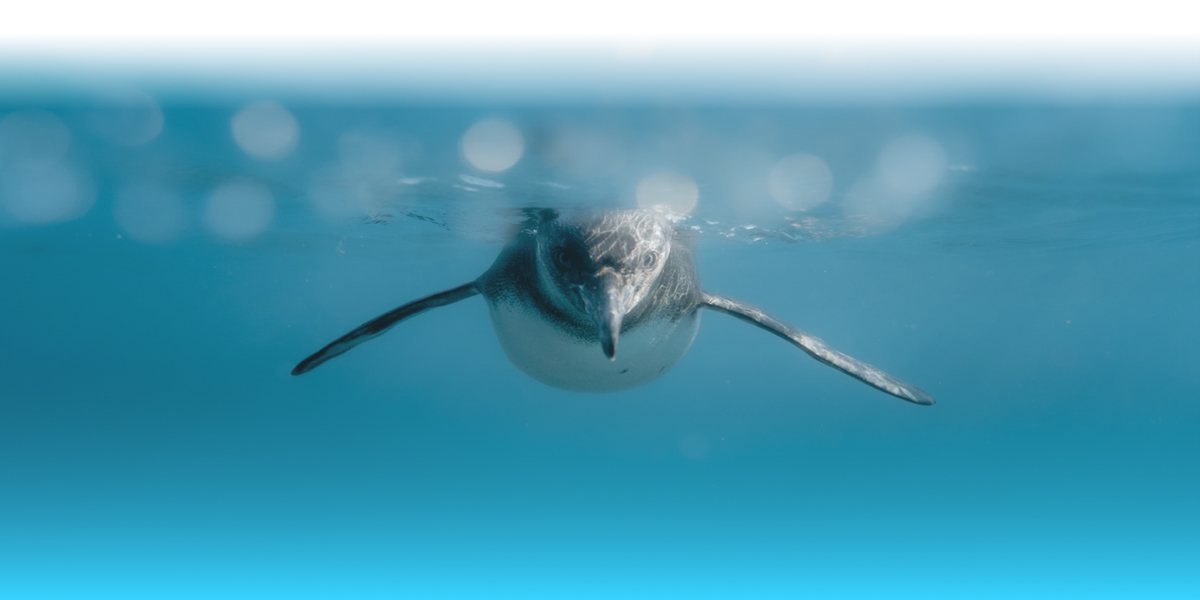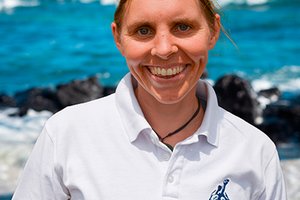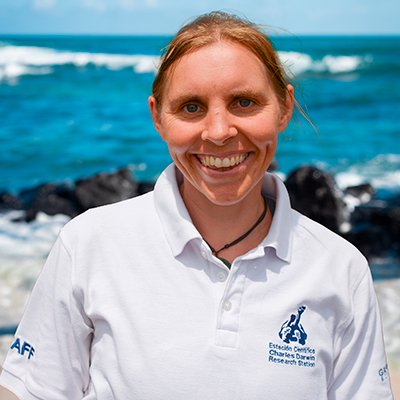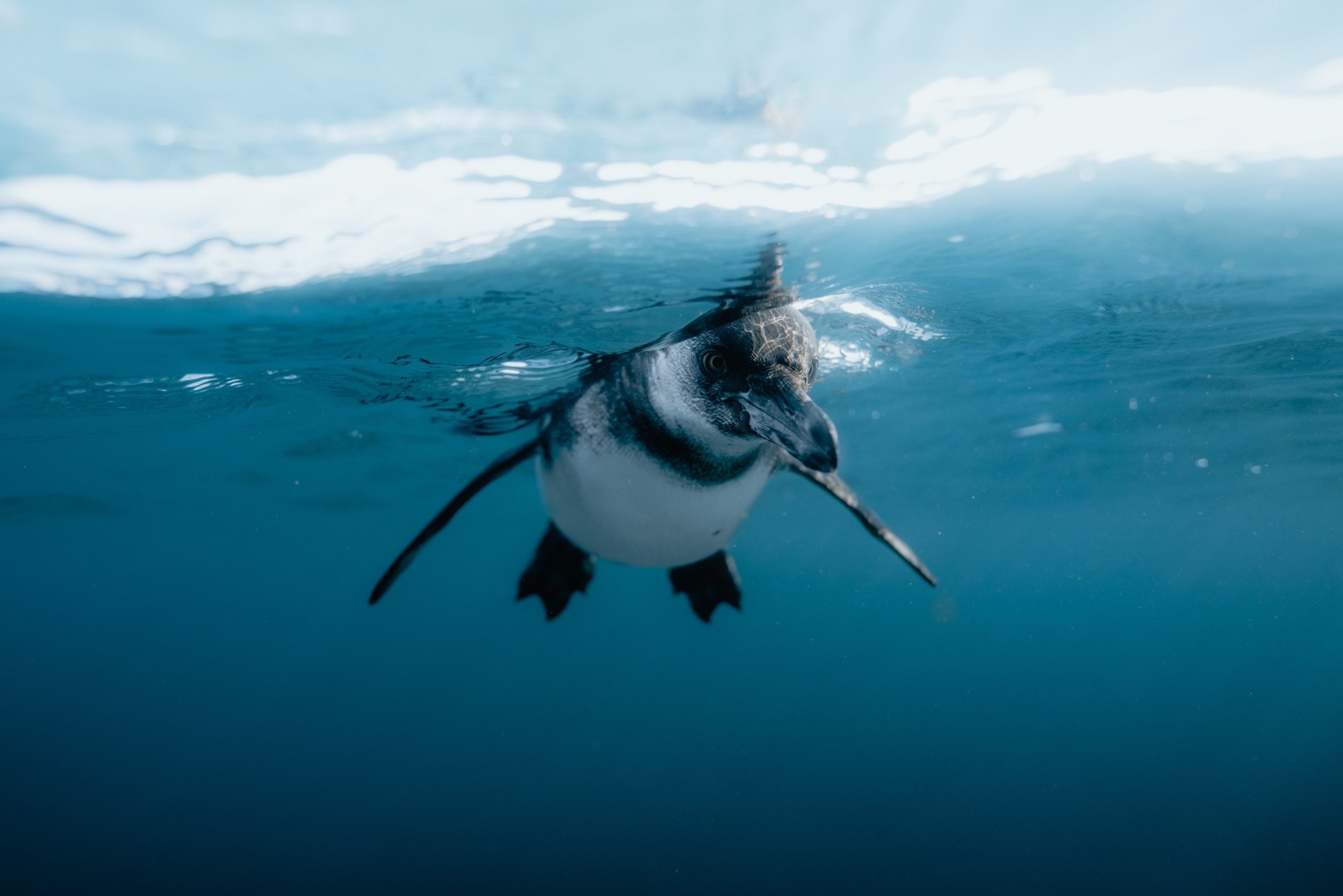
In 2014 the collecting of eggs from the wild and captive breeding of mangrove finch chicks (Camarhynchus heliobates), a critically endangered species of the famous "Darwin's finches", began.
The Mangrove Finch Conservation Project, conducted by the Charles Darwin Foundation (CDF) and the Galapagos National Park Directorate (GNPD), in collaboration with San Diego Zoo Global and Durrell Wildlife Conservation Trust, through intensive management, took an important step to increase the population of the most threatened bird of the Galapagos Islands. The release and monitoring in the wild of eight finches captive-reared at the Charles Darwin Research Station is the final stage of the challenge this year.
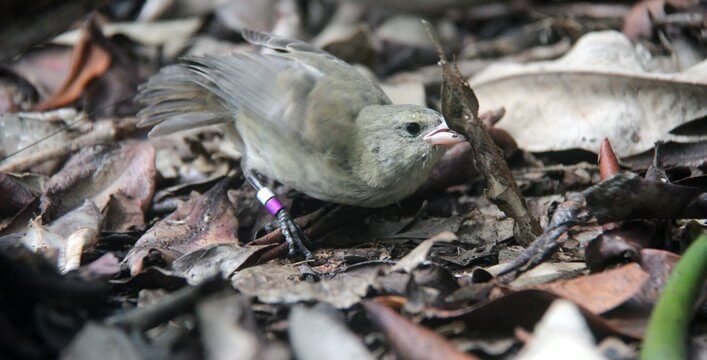
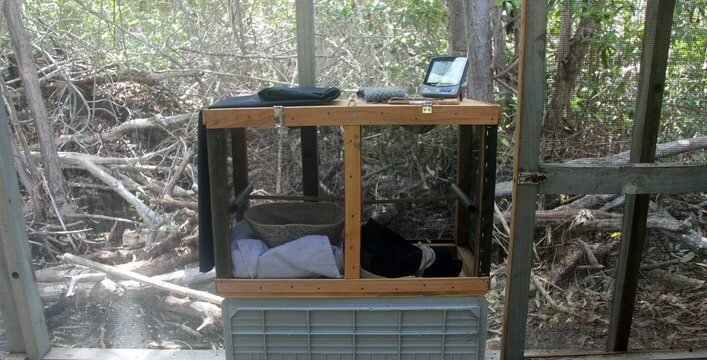
After the team from CDF and the GNPD arrived at Playa Negra Tortuga on Isabela Island, the fledglings were placed in the pre-release aviary located inside the mangrove forest, where they spent three weeks adapting to their natural habitat. Several sources containing the natural food of the mangrove finch were placed inside the aviary: branches, leaves and seeds of the three species of mangrove from the site (Avicennia germinans, Lacungularia racemosa, Rhizophora mangle), in addition to naturally occurring food items: Castela galapageia and Scutia spicata fruits, live moths and caterpillars in A. germinans seeds, as well as a range of invertebrates in leaf-litter. Additionally supplementary passerine pellet food also formed part of the diet of the birds.
After three weeks the aviary hatches were opened and the finches were free to come and go at will, the team continued to provide food inside the aviary for any birds that returned. Daily observations were made to record any birds visiting the aviary. Over time fewer individuals returned and they spent less time in the aviary as they adapted to being in the wild.
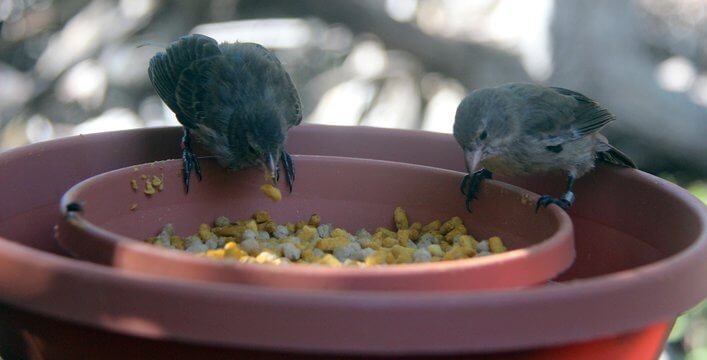
After their release, in order to facilitate short-term monitoring of the finches, tiny transmitters were placed at the base of the birds’ tail feathers, the transmitter batteries lasted 19 days and remained attached during that time. Long-term individual identification is possible through colored rings placed on the legs of each individual.
During the release process, an additional nine-day-old chick was found dying in a nest infested with thirty three Philornis downsi larvae. The project team treated its wounds and raised the chick in the field and were able to release it back into the wild as a healthy fledgling.
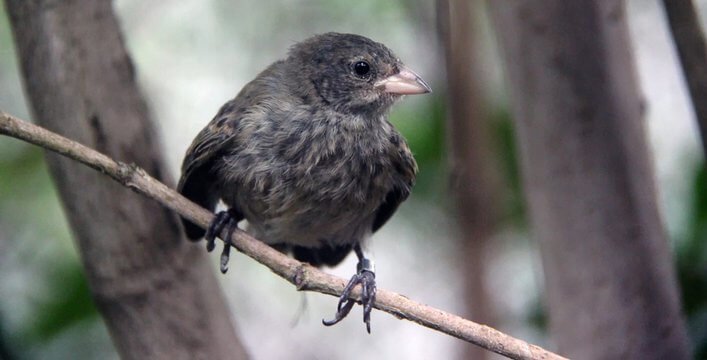
The post-release telemetry monitoring showed the dispersion of most juveniles within the mangrove forest at Playa Tortuga Negra, however some individuals were found north towards Caleta Black and southward in the arid zone as far as the west side of Darwin Volcano and Tagus Cove.
Additionally, eleven wild nests from 10 pairs were monitored at Playa Tortuga Negra. Some pairs nested five or six times without producing fledglings while five pairs were successful and produced a total of six. Parasitism of P. downsi was the major cause of chick mortality and parasites were present in all monitored nests, including those which fledged, containing nestlings over three days old.
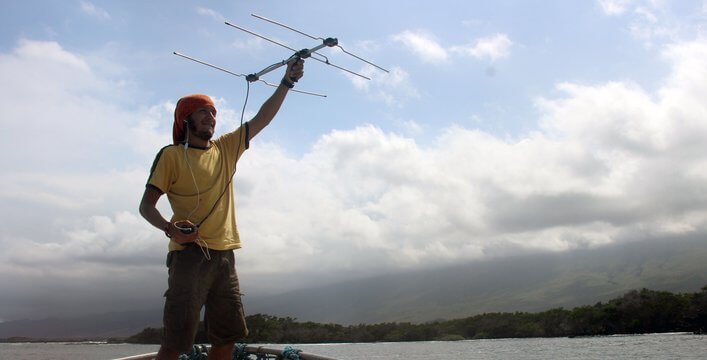
Francesca Cunninghame, leader of the Mangrove Finch, says: "It is incredibly gratifying to free eight Mangrove Finches in captivity and then to monitor their adaptation to their natural habitat. Unfortunately, 2015 was a much more complicated year in comparison with our first attempt in 2014, and we freed fewer finches than we had hoped. However, to return eight young birds to their home environment, away from the threat of P. downsi, continues to be a significant boost to the juvenile population, and from previous investigators we know that none of them would have survived on their own in the wild. Each step of the process is carried out in collaboration with our partners and we hope that through repetition and the perfection of techniques developed to-date we can guarantee the long-term conservation of this critically-endangered species."
The final steps of release and monitoring end the captive-breeding program that began in february of this year. The results are positive for the Mangrove Finch, although there is still much road to travel in the continuing fight to against the extinction of this unique species.
The Mangrove Finch Project is a bi-institutional project carried out by the Charles Darwin Foundation and the Galapagos National Park Directorate in collaboration with the Ministry of the Environment. Our collaborators are the Global San Diego Zoo and the Durrell Wildlife Conservation Trust.
The project is supported by the Galapagos Conservaiton Trust, the Mohamed Bin Zayed Species Conservation Fund, Durrell Wildlife Conservation Trust, the International Community Foundation, through funds donated by the Leona M. and Harry B. Helmsley Charitable Trust, the Galapagos Conservancy and the British Embassy in Ecuador.


